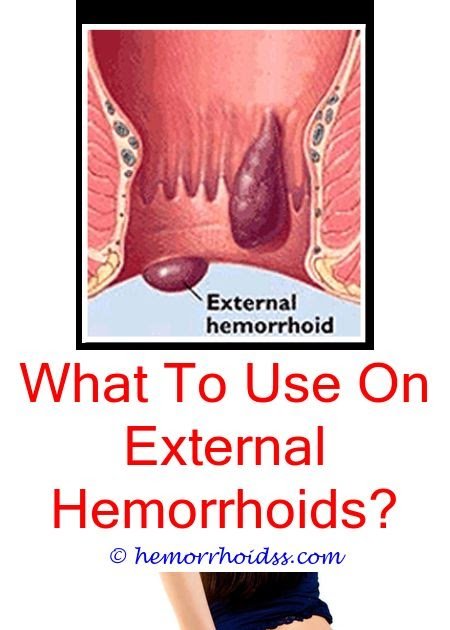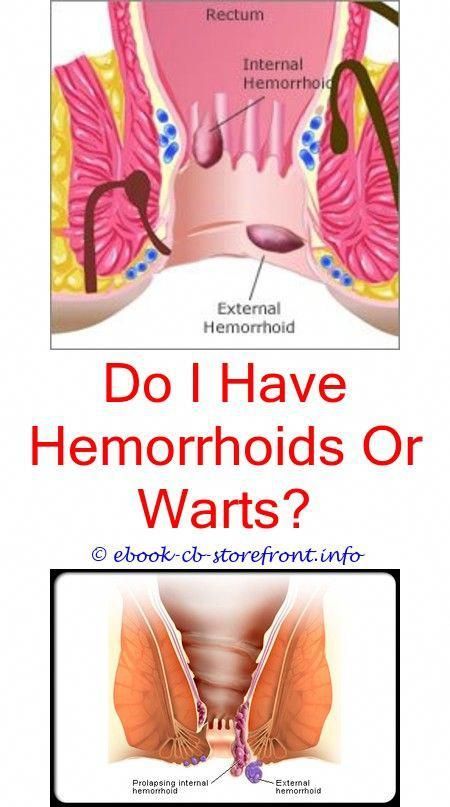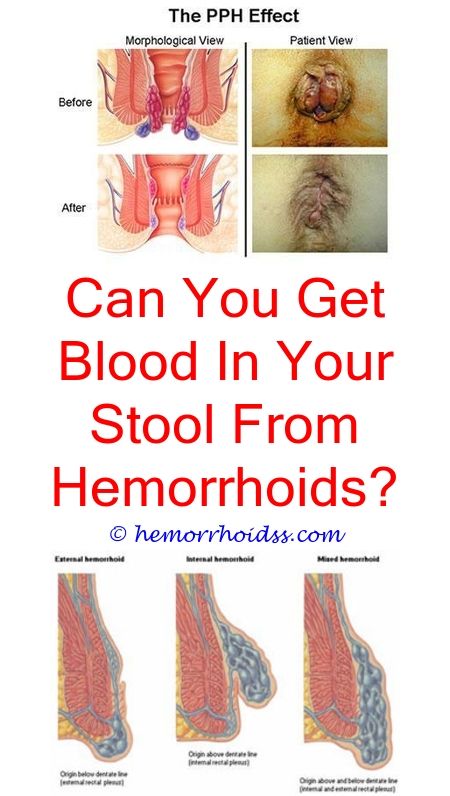What Are The Symptoms Of Hemorrhoids
The symptoms of hemorrhoids depend on which type you have:
With external hemorrhoids, you may have
- Anal itching
- One or more hard, tender lumps near your anus
- Anal pain, especially when sitting
Too much straining, rubbing, or cleaning around your anus may make your symptoms worse. For many people, the symptoms of external hemorrhoids go away within a few days.
With internal hemorrhoids, you may have
- Bleeding from your rectum – you would see bright red blood in your stool, on toilet paper, or in the toilet bowl after a bowel movement
- Prolapse, which is a hemorrhoid that has fallen through your anal opening
Internal hemorrhoids are usually not painful unless they are prolapsed. Prolapsed internal hemorrhoids may cause pain and discomfort.
What Causes Prolapsed Hemorrhoids
When internal hemorrhoids become more severe, they may prolapse. Hemorrhoids are caused when the rectal veins in the anal canal become swollen. In general, the most common causes of hemorrhoids include:
- Pregnancy
- Poor diet without much fiber
- Straining during bowel movements
- Sitting or standing for too long
- Physical labor, particularly labor that causing straining
- Chronic diarrhea
- Strain or exertion from sneezing, coughing, or vomitting
When internal hemorrhoids become significantly enlarged, they can become prolapsed. Once internal hemorrhoids swell to the point that they protrude out of the rectum, they are prolapsed.
What Do External Hemorrhoids Look Like
External hemorrhoids are much easier to self-diagnose because they can be seen and felt, while internal hemorrhoids tend to be less obvious.
External hemorrhoids can be described as any of the following:
- Soft lumps that appear in bunches around the anus.
- A hard, red lump protruding from the outside of the anal area.
- Mucus-covered bumps.
- Bumps that secrete blood when wiped with toilet paper.
Many symptoms of external hemorrhoids, such as pain, can also be caused by other conditions. Therefore, it is important to see a health care practitioner for a formal diagnosis.
Don’t Miss: What Causes Hemorrhoids To Flare
Best Prolapsed Hemorrhoid Surgery Options
There are surgical options available to treat grade IV prolapsed hemorrhoids. When prolapsed hemorrhoids cannot be manually pushed back into place, surgery is often needed.
Minimally invasive options are available to treat prolapsed hemorrhoids. These can be done at a doctors office and involve cutting off the blood supply to your hemorrhoid to rid you of the problem. The most common is the rubber band ligation.
In severe cases, surgery under anesthesia may be necessary. The most common surgery to treat prolapsed internal hemorrhoids is the hemorrhoidopexy. This is commonly referred to as stapling.
Performed in a hospital, hemorrhoidopexy is also referred to as a procedure for prolapse and hemorrhoids . During the surgery, a medical-grade stapler is used to attach the prolapsed hemorrhoidal tissue in place on your rectal wall.
The blood flow is cut off to the hemorrhoids and your anal tissue will shrink back into place. This surgical procedure has a high success rate and is less painful than other hemorrhoid surgeries, like the hemorrhoidectomy.
What Are The Treatments For Hemorrhoids

If at-home treatments for hemorrhoids don’t help you, you may need a medical procedure. There are several different procedures that your provider can do in the office. These procedures use different techniques to cause scar tissue to form in the hemorrhoids. This cuts off the blood supply, which usually shrinks the hemorrhoids. In severe cases, you may need surgery.
Don’t Miss: Can Ibuprofen Help With Hemorrhoids
What Happens If A Hemorrhoid Bursts
If a hemorrhoid bursts, you should experience relief from pain and discomfort. When this happens, you can expect some bleeding to occur. You should keep the area clean to lower the risk of infection.
If you need treatment for hemorrhoids, please contact Gotham Gastroenterology to schedule an appointment.
You Might Also Enjoy…
How Long Does It Take For Internal Hemorrhoids To Go Away
In general, internal hemorrhoids will disappear in 7 days with home remedies.
The internal hemorrhoidal conditions pretty much emerge from the hemorrhoidal veins that lie under the mucosa of the lower rectum and at the end of the anal canal. Strainings are the main enemy and they can surely trigger your hemorrhoids no matter what the types are.
Internal hemorrhoids are certainly a confusing condition and it makes the patient even more stressed. These hemorrhoids are situated over the pectinate line and are covered with cells that are equivalent to those that line the remainder of the digestion tracts.
It may sound all fancy but the basic concept of internal hemorrhoids is pretty simple. Compared to external hemorrhoids which emerge beneath the line and are covered with cells that take after skin, internal hemorrhoids are pretty much completely a different kind of condition. Internal hemorrhoids take less time to go away compared to external ones and it takes pretty much 1-2 weeks if you consider positive lifestyle changes.
Recommended Reading: Are Bidets Good For Hemorrhoids
Calmovil Vein & Colon Formula
Calmovil Vein & Colon Formula is an herbal supplement that was formulated to promote healthy veins and colon health in multiple ways *
|
| “I found Calmovil on the internet and was kind of scared to try it, but I needed help, and I ordered it. I wanted to try this product. I received it in the mail, and in about two weeks I was so much better! Calmovil is natural is I feel it’s so much better. Calmovil helped me with all the bleeding, burning and itching and pain. I’m 100% better now.”Christie from Missouri |
Hemorrhoids: Diagnosis And Treatment Options
TIMOTHY MOTT, MD, Naval Hospital Pensacola, Pensacola, Florida
KELLY LATIMER, MD, MPH, U.S. Naval Hospital Sigonella, Catania, Italy
CHAD EDWARDS, MD, Hamilton Medical Center, Dalton, Georgia
Am Fam Physician. 2018 Feb 1 97:172-179.
Patient information: A handout on hemorrhoids is available.
Hemorrhoids develop when the venous drainage of the anus is altered, causing the venous plexus and connecting tissue to dilate, creating an outgrowth of anal mucosa from the rectal wall. However, the exact pathophysiology is unknown. Hemorrhoids occur above or below the dentate line where the proximal columnar transitions to the distal squamous epithelium . The anus is approximately 4 cm long in adults, with the dentate line located roughly at the midpoint.2 Hemorrhoids developing above the dentate line are internal. They are painless because they are viscerally innervated. External hemorrhoids develop below the dentate line and can become painful when swollen. The extent of prolapse of internal hemorrhoids can be graded on a scale from I to IV, which guides effective treatment . This grading system is incomplete, however, because it focuses exclusively on the extent of prolapse and does not consider other clinical factors, such as size and number of hemorrhoids, amount of pain and bleeding, and patient comorbidities and preferences.3
SORT: KEY RECOMMENDATIONS FOR PRACTICE
Increasing fiber intake is an effective first-line, non-surgical treatment for hemorrhoids.
FIGURE 1.
Don’t Miss: What To Do For Bad Hemorrhoids
Signs & Symptoms Of Internal Hemorrhoids
Internal hemorrhoids are located inside the rectum. These types of hemorrhoids generally resolve on their own and due to their location, are often asymptomatic. In instances when patients do experience discomfort from internal hemorrhoids, it is often because of their size. Larger internal hemorrhoids may cause symptoms such as pain, itching, or burning.
When Do I Need To See A Health Care Provider For Hemorrhoids
You should see your health care provider if you
- Still have symptoms after 1 week of at-home treatment
- Have bleeding from your rectum. Hemorrhoids are a common cause of bleeding, but other conditions can also cause bleeding. They include Crohn’s disease, ulcerative colitis, colorectal cancer, and anal cancer. So it’s important to see your provider to find the cause of the bleeding.
Recommended Reading: Where To Buy Witch Hazel For Hemorrhoids
How Long Does It Take For Thrombosed External Hemorrhoids To Go Away
In general, the swelling and pain should start to go away after about 5 days but it will take 2-3 weeks for the lump or clot to completely go away.
Its pretty obvious by now that hemorrhoids conditions are swollen veins in the lower area of the rectum and its particularly seen in middle-aged people all over the world. Hemorrhoids can happen inside the coating of the anus or rectum but thats not all about it. It can even shape at the inside of the anus.
A thrombosed hemorrhoid happens when blood clusters become caught inside hemorrhoid which you should take note of. It is a typical confusion of hemorrhoids since there are different types of hemorrhoids that can be seen. By and large, outer thrombosed hemorrhoids look like dull pale blue lumps.
The tone is because of blood coagulation inside veins and causing it to block bowel movements. Manifestations that go with a thrombosed hemorrhoid are frequently more serious than the normal hemorrhoids types.
The symptoms include a lot of discomforts like very intense irritation and itchiness around the anus, severe pain both from the inside and outside, extreme swelling that keeps lasting, and so on.
When To Seek Medical Care For Hemorrhoids

When to call the doctor
- Bleeding from the rectum or anus is never normal and although hemorrhoids are the most common reason to have blood in the stool, it should be discussed with your primary health-care professional. Other causes ofrectal bleeding exist and can be serious. Inflammatory bowel disease and cancers of the colon can present with rectal bleeding. Blood in the stool should never be ignored.
- Medical care should be sought urgently if a person is taking anticoagulation medications such as warfarin , dabigatran , rivaroxiban , apixaban , clopidogrel , prasugrel or enoxaparin .
- Individuals who have associated symptoms such as lightheadedness and weakness may have significant blood loss and may require more urgent care.
- Hemorrhoids do not cause abdominal pain should this pain be present with bleeding, medical care should be sought immediately.
- Prolapsed hemorrhoids that cannot be pushed back through the anus require medical care.
- Thrombosed external hemorrhoids may cause significant pain and medical care may be necessary to remove the clot.
Don’t Miss: How To Prevent Hemorrhoids From Bleeding
Diagnosis And Classification Of Hemorrhoids
The most common presentation of hemorrhoids is painless rectal bleeding during defecation with or without prolapsing anal tissue. The blood is normally not mixed in stool but instead coated on the outer surface of stool, or it is seen during cleansing after bowel movement. The blood is typically bright red since hemorrhoid plexus has direct arteriovenous communication. Patients with complicated hemorrhoids such as acutely thrombosed external hemorrhoids and strangulated internal hemorrhoids may present with anal pain and lump at the anal verge. It is uncommon that patients with uncomplicated hemorrhoid manifest any anal pain. In fact, severe anal pain in patient with hemorrhoids is more likely due to anal fissure and anorectal abscess.
A precise history and thorough physical examination, including digital rectal examination and anoscopy, are imperative for the diagnosis of hemorrhoids. Unless bright red blood is clearly seen from hemorrhoids, any patients with rectal bleeding should be scheduled for flexible sigmoidoscopy or colonoscopy, especially those being at risk of colorectal cancer.
What Is A Protruding Hemorrhoid
A protruding hemorrhoid is a mass of inflamed skin and veins that extends through the anus and can be seen on the outside of the body. Straining to have a bowel movement, constipation, and pregnancy are a few things that can put pressure on the veins around the lower rectum and anus. This can result in reddened and swollen skin. If the hemorrhoid is inside of the anus, it is referred to as an internal hemorrhoid. A protruding hemorrhoid located beneath the skin surrounding the anus is considered an external hemorrhoid.
An external or protruding hemorrhoid can produce a hard lump on the anus. This is called a thrombosed hemorrhoid and is actually a blood clot. When this happens, it can result in severe swelling, pain, and intense itching. Scratching and excessive cleaning around the anus can also cause mucus to drain from the lower rectum and add to the itching symptoms.
You May Like: How To Cure Bloody Hemorrhoids
What Is Prolapsed Hemorrhoids
Prolapsed Hemorrhoid is the bulging of hemorrhoid through the anus. Hemorrhoid happens due to the swelling of a vein in the lower rectum . A prolapsed hemorrhoid is usually not painful but causes discomfort while passing stool, sitting, and other day-to-day activities. A prolapsed hemorrhoid is graded from stage one to four depending on the extent to which it sticks out of the anus, with stage four being the advanced stage that requires immediate medical attention.
Causes Of External Hemorrhoids
The most common cause of external hemorrhoids is repeated straining during a bowel movement, leading to the veins of the anus or rectum becoming dilated or enlarged. Because external hemorrhoids result from excessive pressure in the rectums veins, certain factors can increase the chances of external hemorrhoids forming.
Some of the most common external hemorrhoid causes include:
- Pregnancy.
- Heavy weight lifting.
- Obesity.
Each of the above places added pressure on the rectal veins, which may eventually cause increased swelling in the external hemorrhoids. For example, in pregnant women, the uterus puts extra pressure on these veins and can cause them to enlarge. To reduce the likelihood of developing external hemorrhoids or prevent symptoms from worsening, limit the amount of time you spend on the toilet to two minutes and make sure you always practice proper form when heavy lifting.did
Recommended Reading: How To Cure Itchy Hemorrhoids
How To Cure A Hemorrhoid
- Hemorrhoidectomy – It is a surgery that cuts off hemorrhoids. Statistics shows that this hemorrhoid treatment may cause issues with urinating, that is why this is just for severe cases. It is suggested as a last resort because of its really painful recovery that the patients go through.
- Infrared coagulation – It is done by burning off a tissue to stop blood flowing to the hemorrhoid. Each week, the patient has to undergo one treatment session and 6 sessions are usually needed. Despite that ads show that it is not painful, sufferers have said that it’s really painful particularly during the session. It does not cure the cause, so the hemorrhoids can reappear.
- Rubber band ligation – In order to cut off the blood supply, elastic band is wrapped around the base of the hemorrhoid. The hemorrhoid will die and fall off after a couple of days. After the treatment, the bleeding and pain will still be felt. It does not cure the cause of hemorrhoids so they commonly reappear.
Calmovil Hemorrhoid Relief DropsCalmovil Vein & Colon FormulaCalmovil Cooling Cream
Dietary Changes And Self Care
If constipation is thought to be the cause of your haemorrhoids, you need to keep your stools soft and regular, so that you donât strain when passing stools.
You can do this by increasing the amount of fibre in your diet. Good sources of fibre include wholegrain bread, cereal, fruit and vegetables.
You should also drink plenty of water and avoid caffeine .
When going to the toilet, you should:
- avoid straining to pass stools, because it may make your haemorrhoids worse
- use moist toilet paper, rather than dry toilet paper, or baby wipes to clean your bottom after passing a stool
- pat the area around your bottom, rather than rubbing it
Dont Miss: What To Do For Bad Hemorrhoids
Recommended Reading: How Bad Can Hemorrhoids Hurt
Thrombosed Hemorrhoid Symptoms And Treatment
A hemorrhoid is a swollen vein in the anus or rectum, the last part of the large intestine. Thrombosed hemorrhoids happen when a blood clot forms inside a hemorrhoid. The blood clot blocks blood flow, causing painful symptoms.
Most thrombosed hemorrhoids are external, but they can also be internal. External hemorrhoids form in the tissue outside the anus, while internal hemorrhoids are inside.
Thrombosed hemorrhoids are also known as acute hemorrhoidal disease or perianal thrombosis. Perianal is a general term for the area around the anus.
Thrombosed hemorrhoids may appear as a single lump or a circle of lumps. In most cases, the blood clot is reabsorbed by the body and the symptoms go away.
Thrombosed hemorrhoids are not considered dangerous, but they can be very painful. If symptoms do not go away, there are multiple treatment options ranging from topical creams to surgery.
This article discusses the causes, symptoms, and treatment for thrombosed hemorrhoids.
What To Do If Your Condition Doesnt Go Away

Youll need to contact your personal physician about your condition. Your personal physician will get some information about your side effects and clinical history so that he can build up a solid strategy on your treatment procedures considering the type of hemorrhoid you have.
During the test, they may embed a gloved, greased up finger into your rectum to feel for any protuberances or developments and it is certainly necessary. This is known as a digital rectal test and its important for figuring out the next steps.
If theres any chance that you have signs or are in danger of colon cancer, you may require one of these tests to peer further inside your colon.
Read Also: What To Do To Help Hemorrhoids